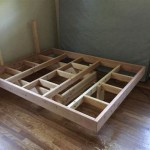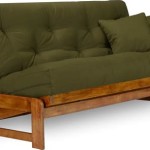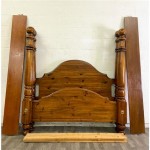What Is The Best Bed Base To Buy?
Selecting the optimal bed base can significantly influence sleep quality and the longevity of a mattress. The ideal bed base provides adequate support, promotes airflow, and aligns with individual needs and preferences. With a multitude of options available, understanding the nuances of each type is crucial for making an informed decision. Factors to consider include mattress type, room aesthetics, budget, and desired features.
The market offers a diverse range of bed bases, each possessing unique characteristics. Common types include platform beds, slatted bases, box springs, adjustable bases, and metal frames. Each type caters to different needs and price points, making careful evaluation essential. The best choice depends on a combination of factors related to both the sleeper and the mattress itself.
Platform Beds: Sleek Support and Style
Platform beds are characterized by their solid or slatted surfaces that directly support the mattress, eliminating the need for a box spring. This design offers a low-profile aesthetic and can contribute to a modern or minimalist bedroom style. Platform beds are available in various materials, including wood, metal, and upholstered options, allowing for seamless integration with existing décor.
One of the primary advantages of platform beds is their inherent support system. The solid or closely spaced slats provide a stable foundation for the mattress, preventing sagging and extending its lifespan. This support is particularly beneficial for heavier individuals or those with back pain. Additionally, many platform beds incorporate storage drawers or compartments, maximizing space utilization in smaller rooms.
However, platform beds can be heavier and more difficult to move compared to other types of bed bases. The solid construction can also restrict airflow around the mattress, potentially leading to heat retention. It is important to consider these factors, particularly for individuals who sleep hot or frequently relocate.
Slatted Bases: Balancing Support and Ventilation
Slatted bed bases consist of horizontal slats, typically made of wood or metal, spaced across a frame. These slats provide support for the mattress while allowing for air circulation. The flexibility of the slats can also contribute to pressure relief, conforming to the body's contours.
The primary benefit of slatted bases is their ability to promote airflow, which helps regulate mattress temperature and reduce moisture buildup. This is particularly advantageous for memory foam mattresses, which can retain heat. Furthermore, some slatted bases allow for adjustable slat placement, enabling customization of support and firmness in specific areas of the mattress.
The durability of slatted bases depends on the quality of the materials and the spacing between the slats. Wider gaps between slats can compromise support and potentially lead to mattress sagging over time. It is crucial to select a slatted base with sturdy slats and appropriate spacing to ensure adequate support and longevity.
Box Springs: Traditional Support and Height
Box springs are fabric-covered frames containing coils or metal grids that provide support and absorb shock. Historically, they were designed to work in conjunction with innerspring mattresses, providing a supportive foundation and increasing bed height. While less common with modern mattress types, box springs remain a viable option for certain scenarios.
The primary advantage of box springs is their ability to elevate the mattress, making it easier to get in and out of bed. This is particularly beneficial for individuals with mobility issues. Furthermore, box springs can help distribute weight evenly across the mattress, potentially extending its lifespan and providing added support.
However, box springs are not compatible with all mattress types. They are generally not recommended for use with memory foam, latex, or hybrid mattresses, as they may not provide adequate support or may even damage the mattress. Additionally, box springs can be bulky and difficult to move, and they do not offer the same level of customization as other bed base options. The increasing popularity of foam mattresses has diminished the need for traditional box springs.
Adjustable Bases: Customizable Comfort and Functionality
Adjustable bases allow users to raise or lower the head and foot of the bed, providing customizable comfort and support. These bases are typically equipped with motors and remote controls, enabling effortless adjustments to various positions. Adjustable bases are often chosen for their health benefits and enhanced lifestyle features.
One of the main advantages of adjustable bases is their ability to alleviate pressure on the spine, improve circulation, and reduce snoring. Raising the head can ease breathing and minimize acid reflux, while elevating the legs can promote blood flow and reduce swelling. Furthermore, adjustable bases often include features such as massage functions, USB ports, and under-bed lighting, enhancing comfort and convenience.
However, adjustable bases are typically more expensive than other types of bed bases. Not all mattresses are compatible with adjustable bases; it is crucial to select a mattress that is specifically designed for use with an adjustable frame. The weight and complexity of these bases can also make them more difficult to move and set up.
Metal Frames: Simple and Affordable Support
Metal bed frames are the most basic type of bed base, typically consisting of a metal frame with center supports. These frames provide a simple and affordable way to support a mattress and box spring. Metal frames are often chosen for their ease of assembly and portability.
The primary advantage of metal frames is their affordability and ease of setup. They are lightweight and easy to move, making them ideal for temporary or smaller spaces. Metal frames also offer adequate support for a mattress and box spring combination. Furthermore, the open design of metal frames allows for ample under-bed storage space.
However, metal frames can be less aesthetically pleasing than other types of bed bases. They may also be less durable and prone to squeaking or rattling over time. The lack of a headboard or footboard can also limit design options. For those seeking a more stylish or long-lasting solution, other bed base options may be more suitable.
Ultimately, selecting the best bed base involves careful consideration of individual needs and preferences. By understanding the unique characteristics of each type, consumers can make an informed decision that optimizes sleep quality, extends mattress lifespan, and complements their overall lifestyle.

The 9 Best Bed Frames Of 2025 Reviews By Wirecutter

The 9 Best Bed Frames Of 2025 Reviews By Wirecutter

The 2 Best Platform Bed Frames Under 600 Of 2025 Reviews By Wirecutter

The 2 Best Platform Bed Frames Under 600 Of 2025 Reviews By Wirecutter

9 Best Adjustable Bed Bases 2025 The Strategist

The 9 Best Bed Frames Of 2025 Reviews By Wirecutter

16 Best Bed Frames This Presidents Day Weekend

The 9 Best Bed Frames Of 2025 Reviews By Wirecutter

14 Best Bed Frames Of 2024 Expert Approved

11 Best Bed Frames 2025 Tested And Reviewed Wired







